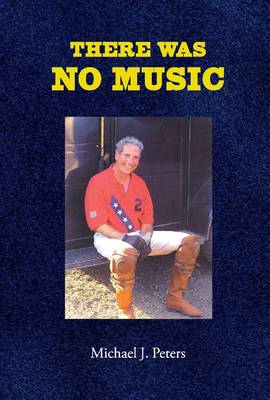
- Retrait gratuit dans votre magasin Club
- 7.000.000 titres dans notre catalogue
- Payer en toute sécurité
- Toujours un magasin près de chez vous
- Retrait gratuit dans votre magasin Club
- 7.000.0000 titres dans notre catalogue
- Payer en toute sécurité
- Toujours un magasin près de chez vous
Description
"There Was No Music" is a recollection of a naval aviator and founding member of a unique combat aviation unit, the HA(L)-3 "Seawolves", the most decorated navy squadron of the Vietnam conflict. The unit is currently the subject of a Smithsonian sponsored historical novel and a nationally televised PBS documentary. The author is cited in the novel and appears in the documentary. In a parallel narrative, the author reflects on the aftermath of the combat experience, a quixotic journey, dogged by post-traumatic stress related to the combat experience. Though the subject matter is often grim, the author's perception is cast in a darkly humorous context. This work evolves in two concurrent parts, one detailing my Vietnam combat experience where, as a decorated naval aviator the author logged in excess of 800 hours of combat flight time and was: twice wounded; twice shot down; and continually engaged in combat actions culminating in a top-secret rescue operation. The parallel story considers the authors reentry into civilian life, a unique odyssey inter-twined with significant socio-political events of the post-World War II era: the Southern California beach scene; Watergate and President Nixon's resignation; Aspen, Colorado evolving as a haven for refugees of the 60's cultural revolution and a celebrity mecca; Gary Hart's disastrous presidential campaigns; and the launch of the International Space Station. While in Vietnam the author flew heavily armed helicopters off refitted World War II transport ships that also served as a mother craft to the river patrol boat teams that plied the Mekong River. The patrol boats were seeking out munitions and supplies that were being delivered via nondescript watercraft to the insurgent Viet Cong guerilla squads that occupied the Mekong Delta. The helicopters provided air cover to counter the countless sniper attacks and set ambushes directed at the boats. The mission was unique to the Vietnam conflict and the author was among the initial cadre of pilots, dubbed the Seawolves, who gave life to and validated the concept. These efforts anticipated and enabled the formation of Helicopter Attack (Light) Squadron three, HA(L)-3. These endeavors also attracted the attention of another fledging organization, the US Navy SEALS, that resulted in collaborative efforts that would continue throughout the Vietnam conflict. In the parallel story, the author details his relationship with Stacey, a young woman he meets in a chance encounter following a reunion of his Seawolf Comrades . Her life, like his, has been unconventional and is the attraction that precipitates the connection. She has lost a husband, an RAF pilot, in a freak accident. She is the daughter of a retired US Congressman though the antithesis of a person steeped in political decorum. She has a passion for horses and a quirky outlook on life. She seems the perfect partner, the realization of a lifelong quest. The evolving relationship is a vehicle for relating the post-Vietnam transition, a life tainted by the combat experience and confounded by the effects of Post-Traumatic Stress Disorder. The story unfolds in varied locations: Lake Tahoe; the beach towns of Southern California; the ski slopes of Aspen, Colorado; the polo fields and fox hunting venues surrounding Middleburg, Virginia and Washington DC. Iconic characters: Nixon associate Charles Colson; gonzo journalist Hunter Thompson; singer John Denver; among others, appear in the narrative. The title, "There Was no Music" derives from the author's reaction to his first combat experience: "The pilot had already swung the aircraft around starting another slow arcing turn to line up behind the targets. Three diminutive figures clad in the standard wardrobe of what appeared to be, and would always be referred to as, "black pajamas", were beginning to move. They were heading for a dike line, the crisscross of barriers that kept the rice paddies flooded. I simply reacted.
About The Author
About The Author
Spécifications
Parties prenantes
- Auteur(s) :
- Editeur:
Contenu
- Nombre de pages :
- 354
- Langue:
- Anglais
Caractéristiques
- EAN:
- 9781098313739
- Date de parution :
- 29-08-20
- Format:
- Livre relié
- Format numérique:
- Genaaid
- Dimensions :
- 157 mm x 231 mm
- Poids :
- 725 g

Les avis
Nous publions uniquement les avis qui respectent les conditions requises. Consultez nos conditions pour les avis.






